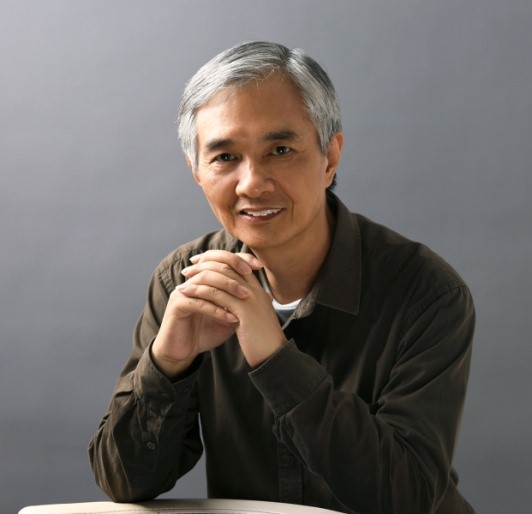
Chinese Folk Motif Arts课程:前往报名学习
Chinese folk motif arts have a rich rural atmosphere and the beauty of purity. It contains traditional Chinese philosophical ideas including Lao Zhuang’s philosophy, reflects the characteristics of "primitive culture". Chinese folk motifs forms an obvious contrast to the Western graphics system in terms of creative ideas, modeling methods, spatial forms and even viewing methods, have created a relatively independent modeling system. It has become the prototype and foundation of Chinese plastic art.
开设学校:深圳大学;学科:艺术设计、
Chinese folk motif arts have a rich rural atmosphere and the beauty of purity. It contains traditional Chinese philosophical ideas including Lao Zhuang’s philosophy, reflects the characteristics of "primitive culture". Chinese folk motifs forms an obvious contrast to the Western graphics system in terms of creative ideas, modeling methods, spatial forms and even viewing methods, have created a relatively independent modeling system. It has become the prototype and foundation of Chinese plastic art.
-A brief introduction of the study unit
-1.1 The meaning of learning Chinese folk motifs
--1.1 The meaning of learning Chinese folk motifs
-1.2 A brief introduction of graph
--1.2 A brief introduction of graph
-1.3 The basic categories of Chinese folk motifs
--1.3 The basic categories of Chinese folk motifs
-1.4 The basic characteristics of Chinese folk motifs art
--1.4 The basic characteristics of Chinese folk motifs art
-1.5 Research on the questions and the motifs cases
--(1) Researches and case studies on motifs
--(2)Research on Traditional Motifs
-1.6 Unit assignment: thinking questions
-1.7 Online Quiz
--1.7 Online Quiz
-1.8 Expanded learning resources
--Embroidery of Guizhou Miao ethnic group (Video)
--The Magnificent Miao Ethnic Group: Wordless Book of Miao (Video)
--Chinese Folk Motifs(Graphics and images)
--Websites
-A brief introduction of the study unit
-2.1 The modeling methods of folk motifs
--2.1 The modeling methods of folk motifs (Part 1)
--2.1 The modeling methods of folk motifs (Part 2)
-2.2 Aesthetic implication of folk motifs
--2.1 Aesthetic implication of folk motifs (Part 1)
--2.2 Aesthetic implication of folk motifs (Part 2)
-2.3 Research on the questions and the motifs cases
--Research on the questions
-2.4 Art Practice: Canton Embroidery
-2.5 Unit assignment: Judgment and thinking questions
--Judgment questions
-2.6 Expanded learning resources
--My hereditary treasure: new year woodblock print made by Tai Liping (Video)
--Taohuawu new year woodblock print (Graphics)
-A brief introduction of the study unit
-3.1 A Brief Introduction of Chinese Folk Paper Cut
--3.1 A Brief Introduction of Chinese Folk Paper Cut
-3.2 The craft of Chinese folk paper cut
--3.2 The craft of Chinese folk paper cut
-3.3 The techniques of expression of Chinese folk paper cut
--3.3 The techniques of expression of Chinese folk paper cut
-3.4 A brief introduction of Chinese shadow puppetry
--3.4 A brief introduction of Chinese shadow puppetry
-3.5 The artistic characteristics of Chinese shadow puppetry
--3.5 The artistic characteristics of Chinese shadow puppetry
-3.6 The modeling of Chinese shadow puppetry
--3.6 The modeling of Chinese shadow puppetry
-3.7 Art Practice: Paper Cut
--A Brief Introduction of Art Practice
--Traditional Chinese Paper Cutting : Butterfly
--Traditional Chinese Paper Cutting : Baby with twisted knors of har
--Paper-cut creative case (picture)
-3.8 Unit assignment: Paper Cut creation
-3.9 Online Quiz
--3.9 Online Quiz
-3.10 Expanded learning resources
--Backstage performance of shadow play (video) (Ⅰ)
--Backstage performance of shadow play (video) (Ⅱ)
--Shadow play "Monkey Eating Peach"
--Analysis of Chinese Shadow Puppet Art
-A brief introduction of the study unit
-4.1 The State of Chu and Chu Culture
--4.1 The State of Chu and Chu Culture
-4.2 Representative Graphics of Chu Culture Remains
--4.2 Representative Graphics of Chu Culture Remains
-4.3 Intangible Cultural Heritage of Chu Culture
--4.3 Intangible Cultural Heritage of Chu Culture (Part 1)
--4.3 Intangible Cultural Heritage of Chu Culture (Part 2)
-4.4 Research on the questions and the motifs cases
--Chu Culture Relics Graphics
--The motifs case : Tujia ethnic Brocade "Xilan Kapu"
-4.5 Art Practice: Decorative painting
--Art Practice: Decorative painting sketch
--Art Practice: Decorative painting modeling
--Art Practice: Decorative painting coloring
-4.6 Unit assignment
--4.6 Unit assignment
-4.7 Online Quiz
--4.7 Online Quiz
-4.8 Expanded learning resources
--Bronze ware, lacquerware, silk fabrics of Chu culture
--Yao ethnic bright-colored embroidery applique, Dong ethnic brocade
-A brief introduction of the study unit
-5.1 Totem
-5.2 Panhu Worship
-5.3 The Legends of Totem in Costumes
--5.3 The Legends of Totem in Costumes
-5.4 The Tattoos of the Li Ethnic Group
--5.4 The Tattoos of the Li Ethnic Group
-5.5 Art Practice: Tie-dye
--Xiang Yunfang tie-dyeing (clamp-tie) video
--Xiang Yunfang tie-dyeing (bundle-tie) video
--Xiang Yunfang tie-dyeing (dog-paw flower) video
-5.6 Research on the questions and the motifs cases
--Totem problem exploration
--Traditional graphics cases:The "Hundred-bird Clothes" of the Miao ethnic in Guizhou
-5.7 Unit assignment: Tie-dye creation and thinking questions
--5.7 Unit assignment: Tie-dye creation and thinking questions
-5. 8 Expanded learning resources
--Miao embroidery in Taijiang (Video)
--The Magnificent Miao Ethnic: Who made life so glorious (Video)
--National costumes of southern China
-A brief introduction of the study unit
-6.1 Philosophical Reflections on the Harmony of Taiji and “Yin and Yang”
--6.1 Philosophical Reflections on the Harmony of Taiji and “Yin and Yang”
-6.2 “Nine Palaces” and Its Spatial Layout
--6.2 “Nine Palaces” and Its Spatial Layout
-6.3 Plane Static Four-dimensional Space
--6.3 Plane Static Four-dimensional Space
-6.4 “Almorphism” of Batik Graphics
--6.4 “Almorphism” of Batik Graphics
-6.5 Ingenious Calculations by Folk Carpenters
--6.5 Ingenious Calculations by Folk Carpenters
-6.6 Research on the questions and the motifs cases
--Research on the questions and the motifs cases
--Introduction to Miao Batik (Video)
--Danzhai Batik - Painting Wax (Video)
-6.7 Unit assignment: thinking questions
--6.7 Unit assignment: thinking questions
-6.8 Online Quiz
--6.8 Online Quiz
-6.9 Expanded learning resources
--The image of dragon in Chinese folk motifs (graphic and image)
田少煦,湖南省凤凰县人,深圳大学设计学科二级教授,数字媒体与视觉文化研究所所长。广东省首批教学名师、国家级教学名师。 田少煦是中国设计艺术研究领域的著名学者,研究方向为数字媒体设计理论与实践、非物质文化遗产及其数字化勘探。曾主持国家社科基金艺术学重大项目子课题、国家社科基金艺术学项目、教育部人文社科项目、广东省重大项目和创新项目等多项研究课题。主持《数字色彩》“国家精品课程”和“国家级精品资源共享课”,主持《中国民间图形艺术》国家精品视频公开课。获教育部高校艺术教育科研论文一等奖、中国工艺美术终身成就奖、全国教育信息化大赛一等奖等。出版学术专著和国家级规划教材等10部。 现在担任教育部高等学校动画、数字媒体专业教学指导委员会副主任,全国高等院校校网络科技与智能媒体设计专业委员会副主任,全国民族技艺职业教育教学指导委员会资深委员。
程遥,深圳大学传播学院助理教授、京都工艺纤维大学设计学博士、名古屋大学文学硕士。研究兴趣聚焦在视觉传播,文化研究与新媒体社群方面,主持广东省社会科学项目1项,在日发表、出版学术论文3篇,参与书籍章节1本。作为助理参与名古屋艺术中心项目一项,作为合作策展&参展人参与京都设计实验室与林茨未来实验室合作项目一项。
王伟,深圳大学传播学院助理教授、北京大学艺术学院博士后、东北师范大学文艺学博士,深圳市高层次人才后备级人才。研究兴趣聚焦在视听新媒体、电影史与电影理论方面,主持国家博士后项目1项、教育部项目1项,发表CSSCI收录学术论文7篇、学术译文7篇、主编书籍1本(2020年即出)。

